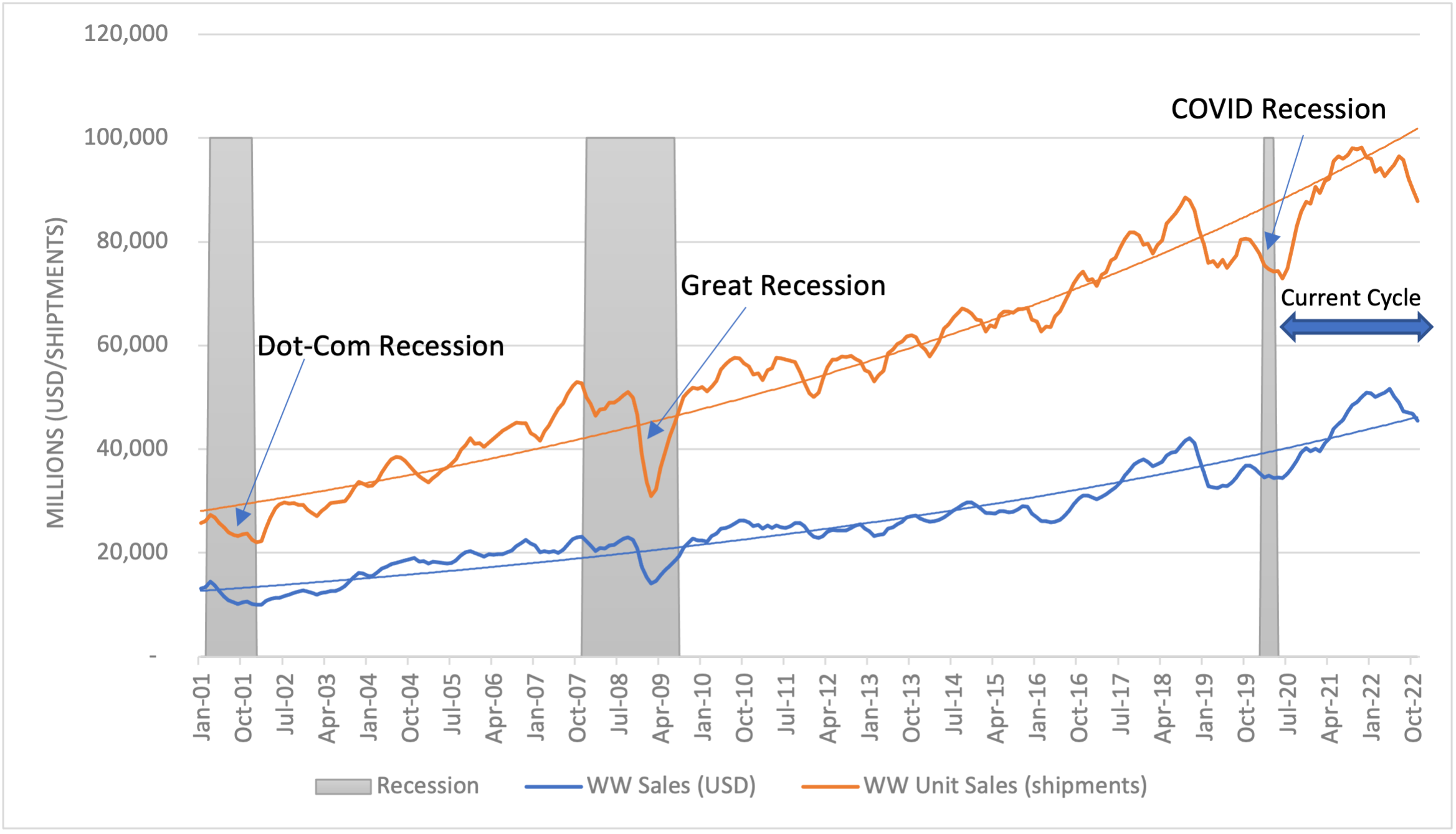Introduction
In 2023, the semiconductor industry experienced a significant downturn, with revenue decreasing by 9% compared to the previous year. This decline, highlighted in Omdia’s latest Competitive Landscape Tool report, underscored the cyclical nature of the semiconductor market.
However, amidst this challenging landscape, artificial intelligence (AI) emerged as a notable growth driver, influencing the semiconductor market in various ways.
Follow us on Linkedin for everything around Semiconductors & AI
Understanding the Semiconductor Market Downturn:
Before delving into AI’s impact, it’s crucial to grasp the factors contributing to the semiconductor market’s downturn in 2023.
Cliff Leimbach, Senior Research Analyst at Omdia, attributes this decline to a combination of softened demand and increased semiconductor supply.
The surge in semiconductor demand during the COVID-19 pandemic, coupled with supply chain disruptions, had initially led to a market shortage and revenue growth.
However, as macroeconomic conditions stabilized and semiconductor supply increased, demand softened, resulting in the observed downturn.
Read More: Tesla’s Moat in Self-Driving : Why Cameras Are Key to Their Self-Driving Domination – techovedas
AI’s Role as a Growth Driver:
Despite the overall downturn, AI emerged as a significant growth driver in the semiconductor industry in 2023.
Companies focusing on AI-related technologies experienced remarkable revenue growth, offsetting some of the market’s decline. Notably, NVIDIA, a key player in AI and graphics processing units (GPUs), saw substantial success.
The company more than doubled its semiconductor revenue from 2022 to $49 billion in 2023.
This achievement underscores NVIDIA’s strategic positioning and the increasing importance of AI-driven technologies in various sectors.
High Bandwidth Memory (HBM) and AI Integration:
AI’s influence on the semiconductor market extended beyond individual companies to specific product segments.
High bandwidth memory (HBM), integrated with GPUs to facilitate AI applications, experienced strong demand. SK Hynix emerged as a leader in this segment, with other major memory manufacturers also venturing into AI-driven technologies.
Despite the overall downturn in the memory market, the HBM market exhibited robust growth of 127% year-over-year in 2023. Omdia forecasts even higher growth rates for HBM in 2024, highlighting its significance in driving memory market growth.
Automotive Segment and AI Integration:
Another area where AI made its mark in the semiconductor market was the automotive segment. ![]()
The integration of intelligence into automobiles, driven by advancements in autonomous driving and connected vehicles, spurred semiconductor demand in this sector.
Despite the overall downturn, the automotive segment experienced revenue growth exceeding 15% in 2023, surpassing $75 billion.
This growth underscores the increasing importance of AI-driven technologies in shaping the future of transportation.
Read More: 7.2 Magnitude Earthquake Hits Taiwan: TSMC and UMC Affected – techovedas
Implications for the Semiconductor Industry:
AI’s influence on the semiconductor market in 2023 has significant implications for the industry’s future trajectory.
Despite the challenges posed by the downturn, AI-driven technologies offer avenues for growth and innovation. ![]()
Companies that strategically invest in AI-related capabilities stand to capitalize on emerging opportunities and navigate market fluctuations more effectively.
Moreover, AI integration across various sectors, from automotive to consumer electronics, highlights the technology’s transformative potential and its role in shaping the future of the semiconductor industry.
Read More:2001: A Space Odyssey: A Timeless Look at AI and Humanity’s Interplanetary Future – techovedas
Conclusion:
In conclusion, despite the semiconductor market’s downturn in 2023, AI emerged as a significant growth driver, influencing market dynamics and product segments.
From enabling advancements in high bandwidth memory to driving innovation in the automotive sector, AI-driven technologies played a crucial role in shaping the semiconductor industry’s landscape.
As companies continue to navigate market fluctuations and embrace AI-related capabilities, the integration of AI is poised to drive further growth and innovation in the semiconductor market in the years to come.
This underscores the importance of AI as a transformative force in the semiconductor industry, driving innovation, growth, and resilience amidst market challenges.




